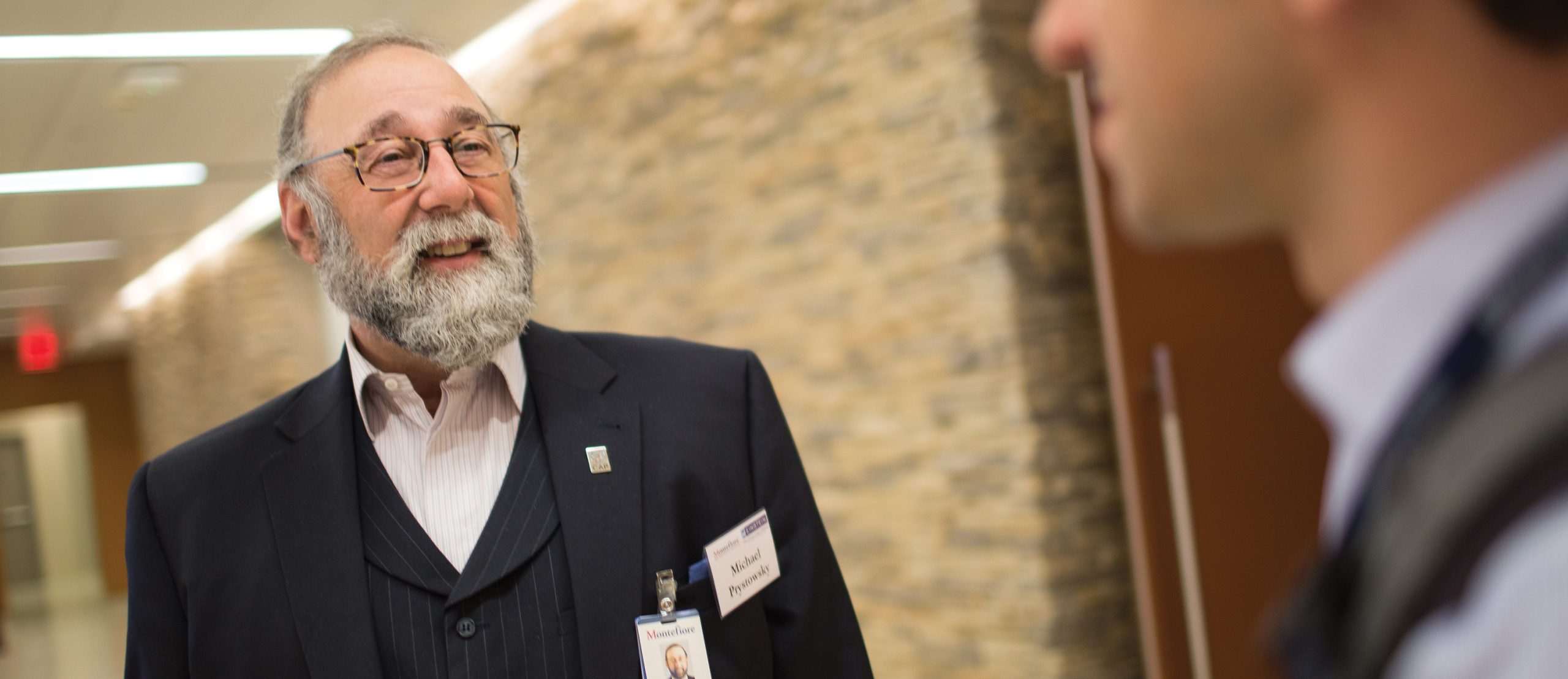
Michael Prystowsky, M.D., Ph.D., is a professor and the chair of pathology at Einstein and Montefiore. A New Jersey native, Dr. Prystowsky earned a doctorate in biomedical sciences at the City University of New York at the Mount Sinai School of Medicine, followed by a postdoctoral fellowship in biochemistry at Rockefeller University. Then came an M.D. from the University of Chicago and a pathology residency there. After a decade at the University of Pennsylvania, he came here in 1993, rising to the position of department chair in 1995.
How did you become interested in medicine?
Both of my parents were physicians. My dad was a pediatric cardiologist and my mom was a child psychiatrist. They were very civic minded and donated their time to helping children in Newark. I’m proud to continue that tradition at Einstein and Montefiore, whose historical mission is to serve marginalized communities.
Do you miss seeing patients?
Yes. But even though pathologists have little or no direct patient contact, we contribute to clinical care in many ways. For example, we participate on tumor boards [where physicians meet to discuss diagnoses and treatment plans], and we help our clinical colleagues decide which tests to select for diagnosing disease and monitoring patients. About 70% of all treatment decisions are based on laboratory tests, so we’re an integral part of the healthcare team.
Would you like to see medical students get more exposure to pathology?
All students learn what’s normal and what’s abnormal, which is pathology. I’d like them to learn more about pathology, but differently. We’ve designed a two-week pathology elective for the new Einstein curriculum. It allows students to follow every step in the pathology process—from taking a tissue specimen in the clinic or operating room to analyzing the tissue in the laboratory to writing a report for the physician to seeing how the findings influence patient care. It’s important that they understand what pathologists do. Even if they don’t go into pathology, they’ll be working closely with us when they go into practice.
You’ve overhauled the pathology residency in many ways over the years. What were some key changes?
Early on at Montefiore, anatomic or “tissue” pathology ruled the roost, while training in clinical pathology—involving knowledge of lab tests and managing lab operations—was basically ignored. So we brought the two subspecialties into better balance in our training program. We now emphasize critical reasoning and the process of making a diagnosis. We give them spokesperson training to enable them to communicate to many audiences, including all members of the healthcare team and the public. The overall idea is to provide pathology residents with the skills to excel wherever they practice.
What distinguishes the Einstein-Montefiore pathology residency?
Its diversity and its commitment to the community. When sorting through the candidates for our residency—we typically have 700 applicants for five spots each year—we look for people who fit our mission and culture, not necessarily those with the best academic credentials. We end up with residents from all over the world—people who’ve worked in underserved communities, with minimal resources, in stressful situations, who know how to resolve conflicts, who can empathize with others.
Could you describe the pathology service line you’ve established at Montefiore?
The service line is a true partnership with the hospital and provides pathology services for all clinical programs. It’s run by the pathologists and laboratory directors, not just their individual labs—and we work collaboratively, not in conflict. We covered just two hospitals when we started the service line 20 years ago. Today, we have more than 700 full-time employees who serve eight hospitals and more than 200 ambulatory-care sites in the Bronx and Westchester and perform 10 million tests a year, covering the entire pathological spectrum: scanning biopsied tissue for cancer, evaluating blood samples for possible hepatitis B or HIV infection, analyzing stool samples for C. difficile infection, and much more, such as testing for COVID-19.
Do you still conduct research?
Less than in the past. The past two years, I’ve been consumed by all the testing responsibilities related to COVID-19. But I’m still involved in our head and neck cancer research program—mostly as a senior adviser, which involves applying molecular and computational techniques to determine the best treatment at initial diagnosis.
Could artificial intelligence one day replace pathologists?
AI is only as good as the information you put into it. When fed the right data about normal and abnormal pathology and the right algorithms, AI will be helpful for analyzing large numbers of anatomic images and highlighting areas that pathologists need to examine more carefully. It will be a great productivity tool; people get tired, but machines don’t.
What do you like to do outside the lab?
Painting, photography, golf, cooking, and travel. I especially love going to Scotland, for the golf—and a bit of work. I do research with a group at the University of St. Andrews, where I have an honorary appointment.